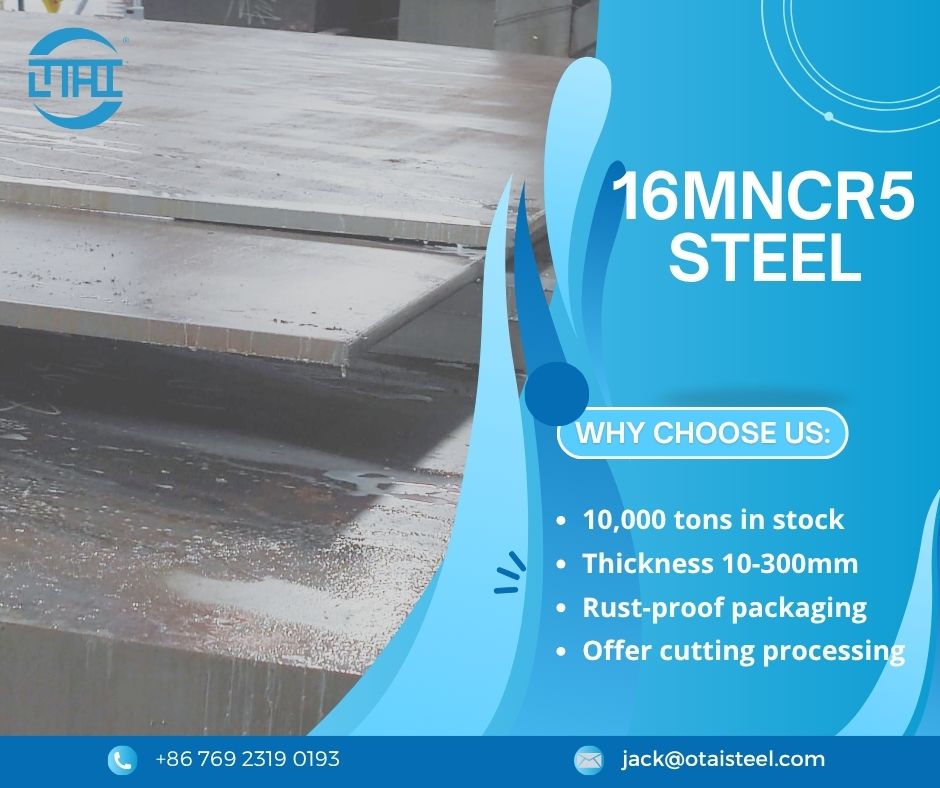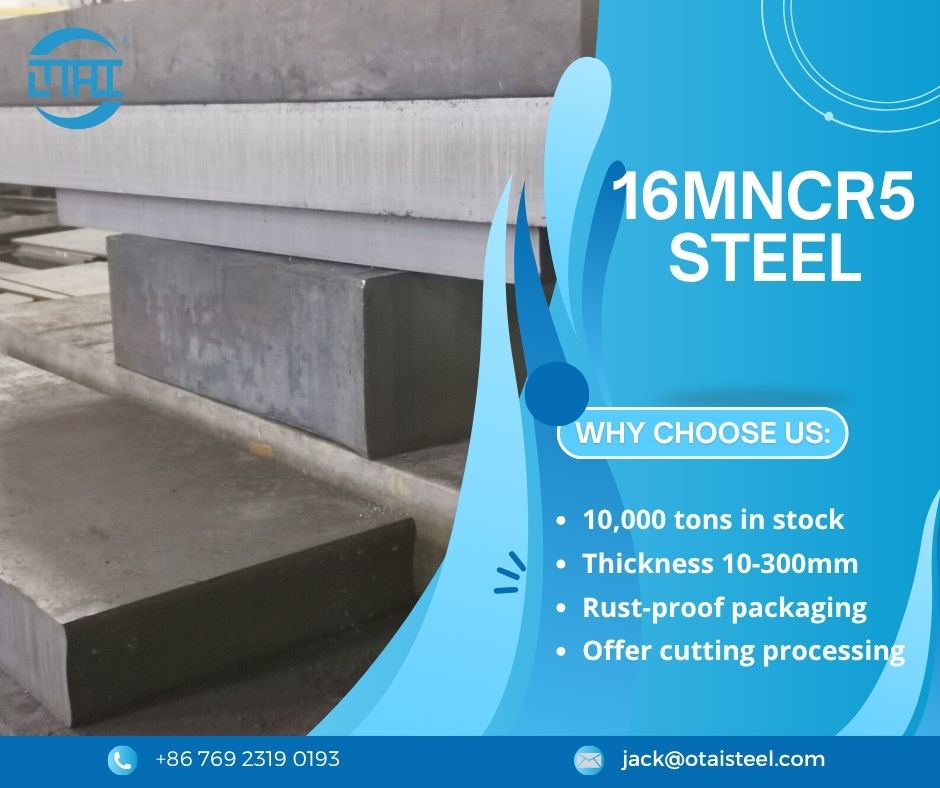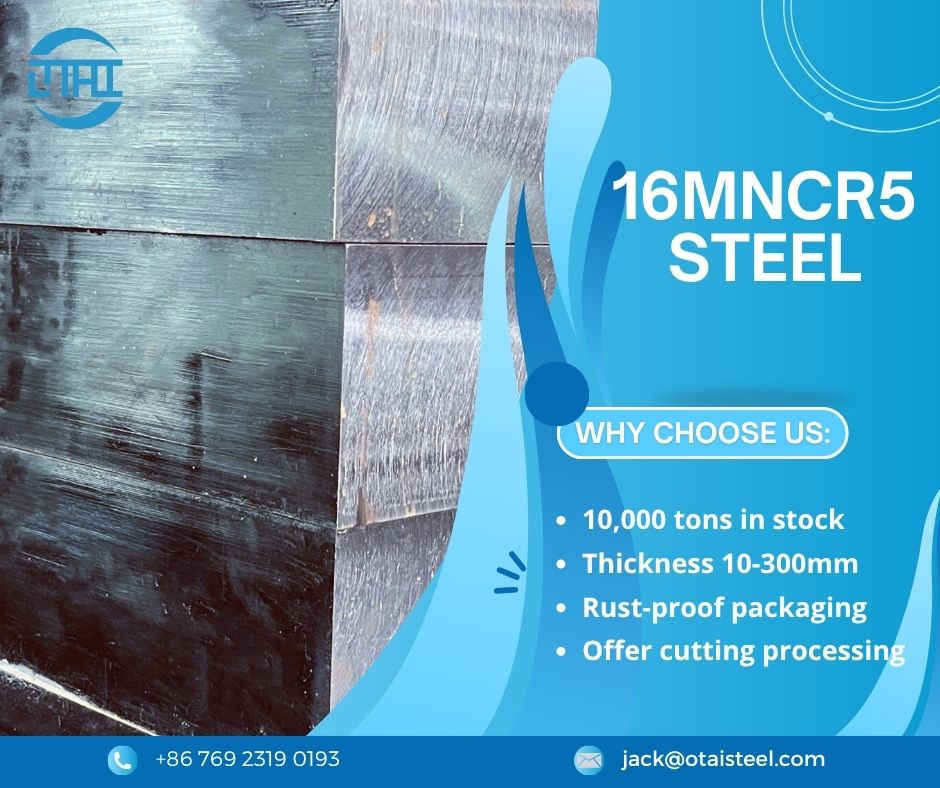 Steel 16MnCr5 Specifications: Understanding Its Key Properties and Applications
Steel 16MnCr5 Specifications: Understanding Its Key Properties and Applications
16MnCr5 is a high-performance alloy steel widely used in industries such as automotive and machinery manufacturing. Its strong mechanical properties make it ideal for critical applications, especially where wear resistance, toughness, and high strength are needed. In this article, we will dive into the specifications of 16MnCr5 steel, covering its chemical composition, mechanical properties, and heat treatment processes.
🔍 What Is 16MnCr5 Steel?
16MnCr5 is a medium-carbon alloy steel that contains manganese (Mn) and chromium (Cr) as its primary alloying elements. These additions enhance the material’s overall strength, wear resistance, and hardenability, making it suitable for demanding applications like gears, shafts, and crankshafts.
Here’s a quick breakdown of its chemical composition:
-
Manganese (Mn): 0.60-0.90% (increases strength and wear resistance)
-
Chromium (Cr): 0.80-1.10% (improves hardness and corrosion resistance)
-
Carbon (C): 0.14-0.19% (medium-carbon content for toughness)
-
Iron (Fe): The remaining percentage, serving as the base metal.
🧪 Chemical Composition of 16MnCr5 Steel
| Element | Composition Range |
|---|---|
| Carbon (C) | 0.14-0.19% |
| Manganese (Mn) | 0.60-0.90% |
| Chromium (Cr) | 0.80-1.10% |
| Silicon (Si) | 0.15-0.35% |
| Phosphorus (P) | ≤ 0.025% |
| Sulfur (S) | ≤ 0.025% |
⚙️ Mechanical Properties of 16MnCr5 Steel
16MnCr5 combines high strength, toughness, and wear resistance. Its mechanical properties make it ideal for components like gears, shafts, and crankshafts that undergo continuous mechanical stress.
Here’s an overview of the key mechanical properties of 16MnCr5:
| Property | Value |
|---|---|
| Tensile Strength | 800-1000 MPa |
| Yield Strength | 550 MPa |
| Elongation | 12-18% |
| Hardness (as quenched) | 58-62 HRC (depending on heat treatment) |
| Impact Toughness | High (especially in carburized conditions) |
Highlights:
-
Tensile Strength: 16MnCr5 offers 800-1000 MPa, which makes it suitable for high-load components.
-
Yield Strength: It can withstand 550 MPa of stress without permanent deformation.
-
Elongation: With an elongation of 12-18%, it remains ductile and resistant to cracking under stress.
🛠️ Heat Treatment of 16MnCr5
The heat treatment of 16MnCr5 significantly enhances its mechanical properties. By applying specific processes, the steel can achieve high surface hardness while maintaining a tough, ductile core.
Carburizing and Quenching:
-
Carburizing increases the carbon content on the steel surface at high temperatures, improving wear resistance.
-
Quenching rapidly cools the steel, locking in the surface hardness at 58-62 HRC.
-
Tempering follows to relieve internal stresses, improving toughness without losing the hardened surface.
These heat treatments allow 16MnCr5 to be highly resistant to wear while maintaining toughness in applications such as gears and shafts.
🏭 Applications of 16MnCr5 Steel
16MnCr5 excels in high-stress, high-wear applications. It is used widely in industries like automotive and machinery manufacturing. Key applications include:
-
Automotive: Crankshafts, camshafts, drive shafts, and gears.
-
Heavy Machinery: Bearings, shafts, and gears.
-
Industrial Equipment: Structural components, molds, and valves.
-
Tooling: Cutting tools, dies, and blades.
These applications require high wear resistance, toughness, and strength, all of which 16MnCr5 provides in abundance.
⚖️ Comparison: 16MnCr5 Steel vs. Other Steel Grades
| Steel Grade | Carbon Content | Alloy Elements | Primary Properties |
|---|---|---|---|
| 16MnCr5 | 0.14-0.19% | Manganese, Chromium | High hardness, wear resistance, toughness, and good machinability |
| AISI 1045 | 0.45% | Manganese | Medium strength, good machinability, lower wear resistance |
| AISI 4130 | 0.30% | Chromium, Molybdenum | High strength, toughness, and excellent hardenability |
| AISI 4340 | 0.40-0.50% | Nickel, Chromium | High toughness, used in aerospace and heavy-duty applications |
As the table shows, 16MnCr5 offers a unique combination of strength, toughness, and wear resistance, which makes it well-suited for a variety of high-performance applications.
❓ Frequently Asked Questions (FAQ)
Q1: What is the hardness of 16MnCr5 steel after heat treatment?
A1: After carburizing and quenching, 16MnCr5 achieves a surface hardness between 58-62 HRC.
Q2: Can 16MnCr5 be welded?
A2: Yes, 16MnCr5 can be welded, but it requires careful handling due to its medium-carbon content. Preheating and post-weld heat treatment can help avoid cracking.
Q3: Why is 16MnCr5 used in automotive applications?
A3: 16MnCr5 is ideal for automotive components like crankshafts and gears because of its excellent combination of strength, wear resistance, and toughness.
🏁 Conclusion
In conclusion, 16MnCr5 is a medium-carbon alloy steel that offers excellent mechanical properties for demanding applications. Its unique balance of toughness, wear resistance, and high strength makes it perfect for components in the automotive, machinery, and industrial sectors. It is not low-carbon steel, but its carburizing capability enhances its performance in high-stress conditions.
For premium 16MnCr5 steel and expert advice on heat treatment and applications, reach out to Otai Special Steel for reliable materials and personalized service.
💪 Company Advantages
At Otai Special Steel, we provide top-quality materials to meet your needs. Here’s why you should choose us:
-
Extensive Inventory: We carry over 10,000 tons of various steel products, ensuring quick and reliable supply.
-
Customized Solutions: We offer cutting, heat treatment, and packaging services tailored to your specifications.
-
Rigorous Testing: Our products undergo chemical composition analysis, ultrasonic testing (UT), and third-party inspections to guarantee top-quality steel.
-
Global Presence: We supply to major international clients across various industries, offering high-quality steel products worldwide.


